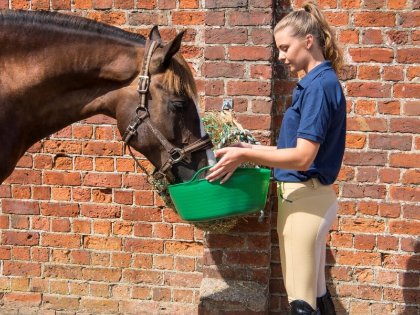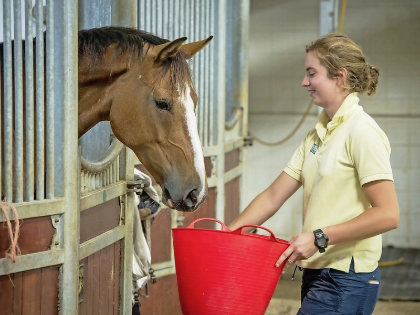Learning to Control Distance on the Green with Lag Putt
Lag putting is an effective technique to have in your toolbox, regardless of whether you're playing from a distant putt or a challenging green with subtle breaks. By using this strategy, you can lower your scores and cut down on the amount of 3-putts you make. Lag putting is all about controlling your speed, which is achieved by accurately reading the greens and determining the necessary tempo. To assist you in mastering this crucial talent, here are some exercises and advice.
Position and Hold

A stroke
 Successful lag putting requires a strong understanding of the greens, particularly when making long putts. It is critical to understand the general break of the green and any potential effects that recent weather may have had on its roll or pace.
To help you get better at long-distance lag putting, Hallett suggests doing a basic read drill and having reasonable expectations. Start by setting up ten golf balls, varying in distance from twenty to fifty feet, on a practice green. Make sure the putt travels no more than 10% of its initial distance after you make it. This will assist you in reducing the amount of three-putts you make and in setting realistic goals.
Considering the long-distance lag Taking your putting to the next level can help you avoid those dreaded three-putts from greater distances, which will increase your chances of saving those crucial strokes. Golfers of all skill levels should become proficient in lag putting because it enables you to position yourself closer to the hole on second putts and helps you avoid costly mistakes that result in unmanageable scores.
Successful lag putting requires a strong understanding of the greens, particularly when making long putts. It is critical to understand the general break of the green and any potential effects that recent weather may have had on its roll or pace.
To help you get better at long-distance lag putting, Hallett suggests doing a basic read drill and having reasonable expectations. Start by setting up ten golf balls, varying in distance from twenty to fifty feet, on a practice green. Make sure the putt travels no more than 10% of its initial distance after you make it. This will assist you in reducing the amount of three-putts you make and in setting realistic goals.
Considering the long-distance lag Taking your putting to the next level can help you avoid those dreaded three-putts from greater distances, which will increase your chances of saving those crucial strokes. Golfers of all skill levels should become proficient in lag putting because it enables you to position yourself closer to the hole on second putts and helps you avoid costly mistakes that result in unmanageable scores.
Examining the Greens
 The one thing that sets professional golfers apart from the rest of the field is their ability to read a green. Fortunately, it's a teachable talent that can be enhanced with repetition. You can save strokes on your score by reading a green with the correct mindset, which will make the difference between sinking lengthy putts and three-putting.
You must consider the overall slope direction, any tiers, and the general contours of the green in order to read a green correctly. The grass's grain and the most recent weather should also be considered because they may have an impact on the ball's roll on the green.
Spending some time on the practice green and making 10 lag putts at various distance markers is a wonderful approach to enhancing your lag putting. You're making progress with your reads and feel for long putts if you can make the initial putt within ten percent of the original distance.
The one thing that sets professional golfers apart from the rest of the field is their ability to read a green. Fortunately, it's a teachable talent that can be enhanced with repetition. You can save strokes on your score by reading a green with the correct mindset, which will make the difference between sinking lengthy putts and three-putting.
You must consider the overall slope direction, any tiers, and the general contours of the green in order to read a green correctly. The grass's grain and the most recent weather should also be considered because they may have an impact on the ball's roll on the green.
Spending some time on the practice green and making 10 lag putts at various distance markers is a wonderful approach to enhancing your lag putting. You're making progress with your reads and feel for long putts if you can make the initial putt within ten percent of the original distance.
Display
 Learning to see the putt from many perspectives is essential to being a proficient lag putter. Players frequently only have one view of the putt and estimate distance by feeling the depth of the hole. This is a grave error.
Rather, visualise a six-foot-diameter circle surrounding the hole and try to place your lag putt inside it. This releases the pressure to make the putt and enables you to evaluate the putt's speed and line more critically.
Removing those hated three-putts can significantly lower your score. See a coach at a nearby GOLFTEC Training Centre to find out how you may get better at lag putting and prevent those annoying additional strokes. We'll provide you with a thorough putting evaluation, a customised practice schedule, and guidance to help you make fewer mistakes on the greens. Complete this form to get going. Additionally, drills, putting advice, and more will be sent to your inbox.
Learning to see the putt from many perspectives is essential to being a proficient lag putter. Players frequently only have one view of the putt and estimate distance by feeling the depth of the hole. This is a grave error.
Rather, visualise a six-foot-diameter circle surrounding the hole and try to place your lag putt inside it. This releases the pressure to make the putt and enables you to evaluate the putt's speed and line more critically.
Removing those hated three-putts can significantly lower your score. See a coach at a nearby GOLFTEC Training Centre to find out how you may get better at lag putting and prevent those annoying additional strokes. We'll provide you with a thorough putting evaluation, a customised practice schedule, and guidance to help you make fewer mistakes on the greens. Complete this form to get going. Additionally, drills, putting advice, and more will be sent to your inbox.










